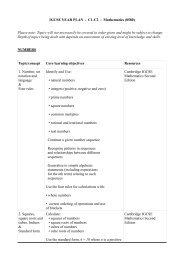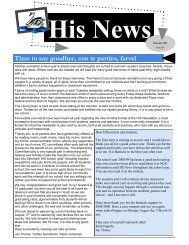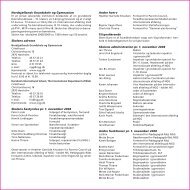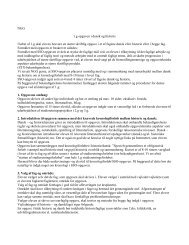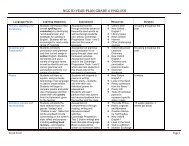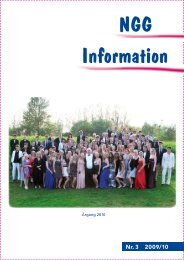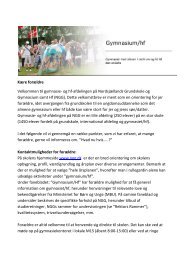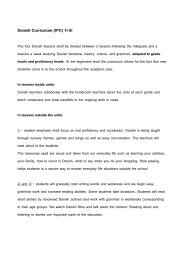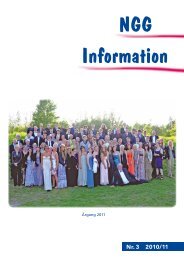IGCSE Physics
IGCSE Physics
IGCSE Physics
- No tags were found...
You also want an ePaper? Increase the reach of your titles
YUMPU automatically turns print PDFs into web optimized ePapers that Google loves.
Other information9. Other informationEquality and inclusionCambridge International Examinations has taken great care in the preparation of this syllabus andassessment materials to avoid bias of any kind. To comply with the UK Equality Act (2010), Cambridge hasdesigned this qualification with the aim of avoiding direct and indirect discrimination.The standard assessment arrangements may present unnecessary barriers for candidates with disabilitiesor learning difficulties. Arrangements can be put in place for these candidates to enable them to access theassessments and receive recognition of their attainment. Access arrangements will not be agreed if theygive candidates an unfair advantage over others or if they compromise the standards being assessed.Candidates who are unable to access the assessment of any component may be eligible to receive anaward based on the parts of the assessment they have taken.Information on access arrangements is found in the Cambridge Handbook which can be downloaded fromthe website www.cie.org.ukLanguageThis syllabus and the associated assessment materials are available in English only.Grading and reportingCambridge <strong>IGCSE</strong> results are shown by one of the grades A*, A, B, C, D, E, F or G indicating the standardachieved, A* being the highest and G the lowest. ‘Ungraded’ indicates that the candidate’s performance fellshort of the standard required for grade G. ‘Ungraded’ will be reported on the statement of results but noton the certificate. The letters Q (result pending); X (no results) and Y (to be issued) may also appear on thestatement of results but not on the certificate.Entry codesTo ma intain the security of our examinations we produce question papers for different areas of the world,known as ‘administrative zones’. Where the component entry code has two digits, the first digit is thecomponent number given in the syllabus. The second digit is the location code, specific to an administrativezone. Information about entry codes, examination timetables and administrative instructions can be found inthe Cambridge Guide to Making Entries.Cambridge <strong>IGCSE</strong> <strong>Physics</strong> 0625. Syllabus for examination in 2015.53



